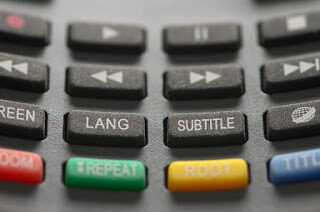5 Reasons Why You Should Flip Your Classroom
The Need for Flipped Learning in our Classrooms
By Guest Blogger: Dom Gibson
Flipped learning has long been used as a highly effective pedagogical
approach in classrooms. Flipped classrooms completely transform
the nature of the in-class activities of the students. Instead of
teacher-delivered lectures, students receive the curriculum content
through other mediums. These include online video lectures and
other delivery tools utilizing cutting-edge educational technologies.
However, it’s not technology but the pedagogy of flipped classrooms
that matters. By delivering content outside of class, students and
teachers alike can utilize the in-class time period for other
activities. Students are able to listen to video lectures online,
for instance, and then use classroom time for discussions. This
enables a more interactive learning experience, with a deeper
understanding of educational concepts. It also allows the instructor
to provide more personalized mentoring to the students.
Flipped learning offers overwhelming advantages when compared to
traditional classrooms. Here are some of the key reasons why we
need flipped learning in our classrooms.
1. Making it relevant for the students
Students today have a digitally connected lifestyle. From Facebook to
Youtube and gaming apps, they spend a considerable time everyday
online. For many kids, their mobile devices are with them 24/7, even
if they are forced to shut them down in traditional classrooms.
When such students are taught in traditional classrooms, they feel
a disconnect. It’s hard for them to relate to a pedagogical method
which they consider obsolete.
Flipped learning takes a different approach. By utilizing the same tools
which students already use, on devices which they already have,
flipped learning makes the educational experience incredibly relevant
for the students. Students are able to connect with the flipped
approach and this leads them to enthusiastically participate in it.
2. Making it more interactive
In traditional classrooms, the teacher typically spends most of the
time delivering a lecture-style lesson. Student-teacher interaction
is limited and usually happens in the form of questions and answers.
Some traditional classrooms may use interactive activities such as
discussions but lectures remain the mainstay of such classrooms.
Flipped learning, on the other hand, removes the content delivery
from the classrooms. Content is delivered online or through other
means outside of the classroom. This means that the in-class time is
entirely available for interactive activities. For students, this means a
more fun and engaging way of grasping concepts which they have
already read about. For teachers, this affords an opportunity to spend
more time on individual students and cater to their unique
educational needs.
3. Helping all students to excel
Every classroom has students of various learning abilities. Some are
quick to grasp the key concepts, others
take some time and may require a more interactive approach.
Flipped classrooms provide the opportunity to cater to this entire
range of abilities.
By being able to walk around the classroom, engage in discussions
and talk to students, teachers are able to discern their learning needs
better. They can, for instance, spontaneously create discussion groups
for all students struggling with a given concept. Then they can focus
on this group to help them learn more effectively. Alternatively, the
teacher can assign each student with a keen understanding to help a
few struggling students. This leads to healthier student-student
interactions while helping all students to excel in the classroom.
4. Catering to all learning speeds
In a traditional classroom, the teacher delivers lessons at their own
pace. For some students, this pace is good enough to grasp the key
concepts. For others, the teachers are either too slow or too quick.
If they are too slow for the students, students lose interest.
If they are too quick, students miss out on many things.
Contrast this with flipped classrooms. Online video lessons allow
students to play, rewind, pause and replay the lectures as many
times as they want. As a result, each student is able to digest the
content at his or her own pace. For students who struggle with any
concept, they can easily replay the lecture as many times as they
want and consult it again whenever they like. This makes the content
delivery in flipped classrooms a truly revolutionary learning
experience for the students.
5. Accommodating the student lifestyle
Gone are the days when being at school meant having a simple
combination of playground fun and classroom focus.
Today’s kids have to handle a multitude of extra-curricular activities,
often have to deal with changes to the nuclear family format, and
also navigate the positive and negative applications of digital media
and the impact this can have on them.
Flipped classrooms accommodate this lifestyle by being incredibly
flexible. Students have the entire curriculum content available to
them. So, for instance, if a student needs to take work between two
homes, or wants to share the content with a tutor to work through
the concepts together, this is easily achievable. This way, amidst the
often overwhelming bombardment of video games, tv and mobile
devices, kids can also see the productive uses of tech as well.
The flipped learning model essentially gives students the opportunity
to manage their time. Apart from helping them academically,
this also lets them learn a valuable lifestyle habit.
Conclusion
Flipped classrooms are an excellent way to cater to the unique needs
of today’s students. This approach puts the remote in the hands of
the students while turning teachers into guiding mentors instead of
full-time lecturers. The end result is a far more effective learning
experience for the students. For the students of today’s digital age,
flipped learning is truly the way forward.
Join the digital discussion about using technology online in our Facebook Group Teacher Prep Tech. Got a burning idea you want to write about please contact us!
About the Author:
“Dom Gibson is the educational content editor at Tutorful, the UK’s fastest growing tutoring marketplace. He spends most of his day researching new topics in education and writing articles on the subject. He is a passionate learner and believes education is the most valuable gift a person can be given, which is nice, because so does Tutorful. You can find links to the the Tutorful blog, website and social media here.”
Sources:
https://en.wikipedia.org/wiki/Flipped_classroom









